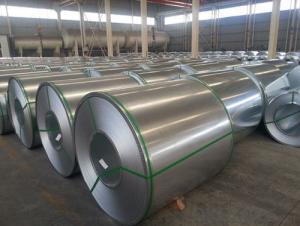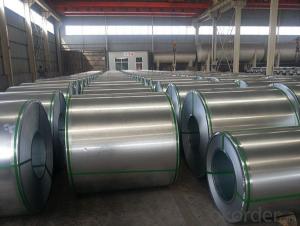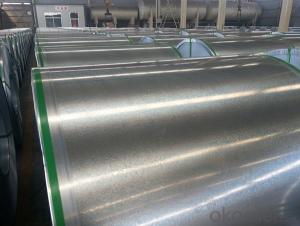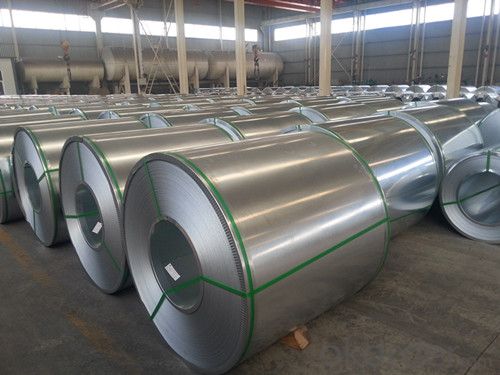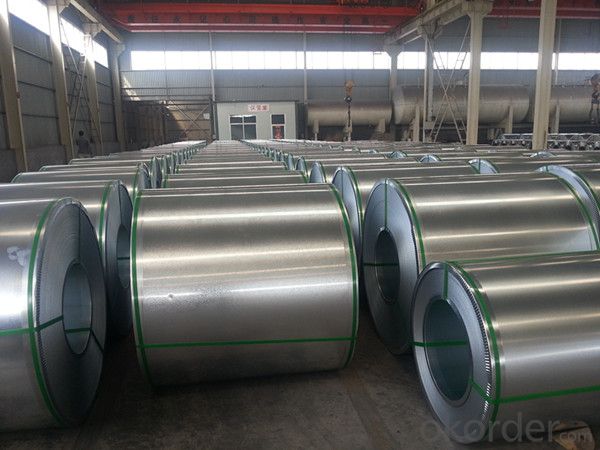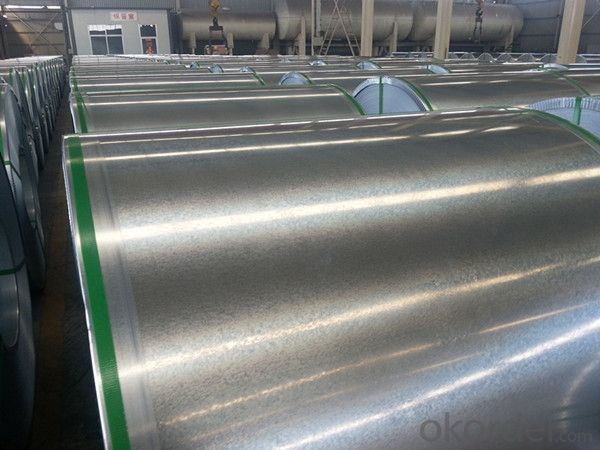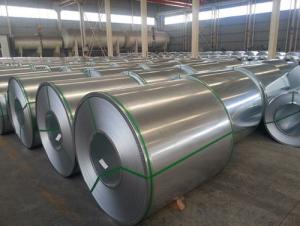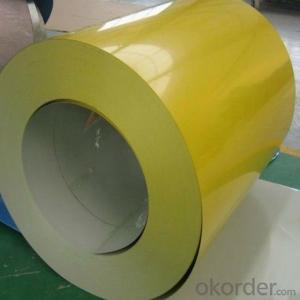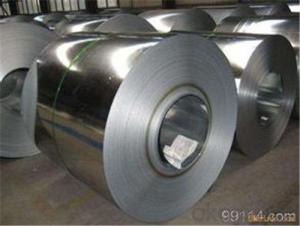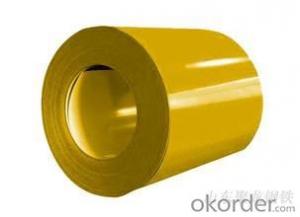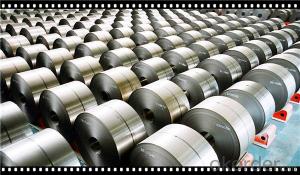Hot-dipped Galvanized Steel Coils/Sheets from China CNBM
- Loading Port:
- China main port
- Payment Terms:
- TT OR LC
- Min Order Qty:
- 25 m.t.
- Supply Capability:
- 100000 m.t./month
OKorder Service Pledge
OKorder Financial Service
You Might Also Like
Product Description:
OKorder is offering high quality Cold rolled Hot Dip Galvanized Steel Coil at great prices with worldwide shipping. Our supplier is a world-class manufacturer of galvanized steel, with our products utilized the world over. OKorder annually supplies products to European, North American and Asian markets. We provide quotations within 24 hours of receiving an inquiry and guarantee competitive prices.
Product Applications:
Cold rolled Hot Dip Galvanized Steel Coil is ideal for fabricating and manufacturing applications.
Product Advantages:
OKorder's Galvanized Steel Coil is durable, boasts high stiffness and load-bearing qualities, and is recyclable.
Main Product Features:
· Premium quality
· Prompt delivery & seaworthy packing (30 days after receiving deposit)
· Corrosion resistance
· Can be recycled and reused
· Mill test certification
· Professional Service
· Competitive pricing
Product Specifications:
Manufacture: Hot rolled
Coil ID: 508mm
Coil OD: 900-1500 mm
Grade: DX51D+Z
Coating: 30 – 180g/m² (both sides)
Dimensions:
Thickness: 0.2mm – 1.0mm
Width: 600mm, 914mm, 1000mm, 1220mm, 1250mm
Coil Weight: 4 – 6mt
Length: 6m, 9m, 12m
FAQ:
Q1: Why buy Materials & Equipment from OKorder.com?
A1: All products offered byOKorder.com are carefully selected from China's most reliable manufacturing enterprises. Through its ISO certifications, OKorder.com adheres to the highest standards and a commitment to supply chain safety and customer satisfaction.
Q2: How do we guarantee the quality of our products?
A2: We have established an advanced quality management system which conducts strict quality tests at every step, from raw materials to the final product. At the same time, we provide extensive follow-up service assurances as required.
Q3: How soon can we receive the product after purchase?
A3: Within three days of placing an order, we will begin production. The specific shipping date is dependent upon international and government factors, but is typically 7 to 10 workdays.
Q4: What makes stainless steel stainless?
A4: Stainless steel must contain at least 10.5 % chromium. It is this element that reacts with the oxygen in the air to form a complex chrome-oxide surface layer that is invisible but strong enough to prevent further oxygen from "staining" (rusting) the surface. Higher levels of chromium and the addition of other alloying elements such as nickel and molybdenum enhance this surface layer and improve the corrosion resistance of the stainless material.
Q5: Can stainless steel rust?
A5: Stainless does not "rust" as you think of regular steel rusting with a red oxide on the surface that flakes off. If you see red rust it is probably due to some iron particles that have contaminated the surface of the stainless steel and it is these iron particles that are rusting. Look at the source of the rusting and see if you can remove it from the surface.
Q6: What is the difference between galvanized steel and Galvalume steel?
A6: Galvanized steel is metallic coated with Zinc in various coating weights. Minimum recommended for painted metal roofs is G90. Galvalume is a zinc and aluminum coated steel that becomes an alloy and is recommended in either painted or bare applications with a minimum coating weight of AZ50. Galvalume has an excellent performance life in bare exposures. Hence if you are using a bare panel use Galvalume and if painted use either.
Images:
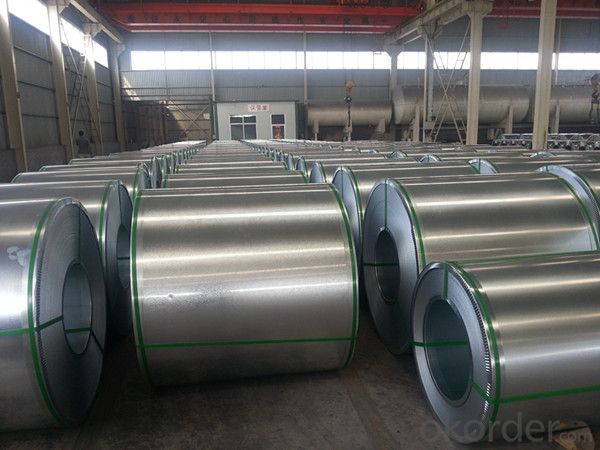
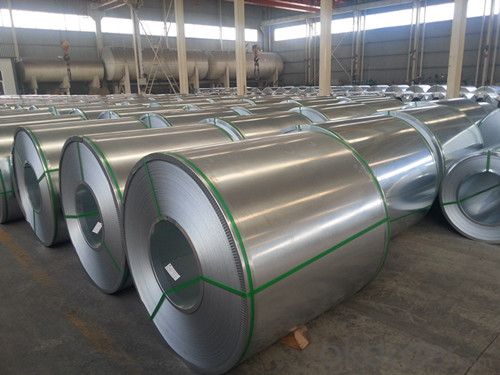
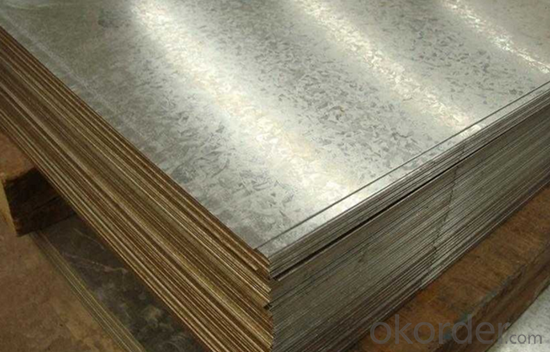
- Q: What are the safety precautions while handling steel coils?
- When handling steel coils, it is important to follow certain safety precautions to prevent accidents and injuries. Here are some key safety measures to consider: 1. Personal Protective Equipment (PPE): Always wear appropriate PPE such as steel-toed boots, safety glasses, gloves, and a hard hat. PPE will protect you from potential hazards, including falling objects, sharp edges, and flying debris. 2. Training and Proper Lifting Techniques: Ensure that workers involved in the handling of steel coils have received proper training on safe lifting techniques. This includes using the legs to lift, keeping the back straight, and avoiding twisting motions. Proper lifting techniques reduce the risk of back strains and injuries. 3. Secure Storage and Stacking: When storing or stacking steel coils, make sure they are placed on a level and stable surface. Use appropriate storage equipment such as racks or pallets to prevent coils from shifting or falling. Securely stack the coils to avoid toppling or collapsing. 4. Inspection and Maintenance: Regularly inspect steel coils for any defects, such as sharp edges, loose bands, or damaged packaging. Avoid handling coils that appear damaged or unstable. Maintenance of equipment, such as forklifts or cranes, used for moving the coils should be regularly conducted to ensure safe operation. 5. Communication and Signaling: Implement clear communication and signaling protocols between workers involved in handling steel coils. This can include hand signals or radio communication to coordinate movements and prevent accidents, especially in areas with restricted visibility. 6. Load Limits and Capacity: Be aware of the load limits and capacity of the equipment being used to move steel coils, such as forklifts or cranes. Overloading equipment can lead to instability, tipping, or collapse, increasing the risk of accidents and injuries. 7. Proper Lashing and Securing: When transporting steel coils, use appropriate lashing and securing methods to prevent movement or falling during transportation. This may include using straps, chains, or other restraints to keep the coils in place. 8. Emergency Preparedness: Have an emergency plan in place in case of accidents or injuries. Ensure that workers are trained in first aid and that emergency response equipment, such as fire extinguishers and first aid kits, are readily available. By following these safety precautions, the risk of accidents and injuries while handling steel coils can be significantly reduced, creating a safer work environment for all involved.
- Q: I have a new stainless steel trash compactor under a butcher block counter. We refinished the countertop, but unfortunately the person who did it wasn't careful with the orbital sander and sanded the top edge of the stainless steel compactor door, ruining the finish. The sander marks are not deep - just surface scratches - but they are unsightly. Is there any way to restore the finish to the stainless steel without having to buy a new door?
- Scratches are difficult to remove. Most kitchen appliances, sinks, and counters have a polished finish with short directional polishing lines. Restoring a polished finish to its original appearance requires a professional such as a company that specializes in fabricating or polishing stainless steel. If the refrigerator or dishwasher door panel is replaceable, purchasing a new panel is normally more cost effective than professional refinishing. The homeowner may want to consider obtaining replacement panels with angel hair, distressed, swirl, or embossed finish. These finishes help to hide light scratching and can be obtained from companies that specialize in stainless steel finishes. Counters and appliance doors that are not easily removable must be refinished in place. When the counter is refinished, it may have long rather than short polishing lines. If a slightly different finish is acceptable and cost is a consideration, a homeowner can refinish the counter or appliance using a non-metallic abrasive pad such as a Scotch Brite? pad. This can be done by rubbing the surface with the pad using long uniform strokes in the same direction as the current polishing lines. This will not eliminate deep scratches. A professional may offer this finish as a less expensive option. The resulting finish is normally referred to as a hairline or long grain finish. Some appliance companies are starting to offer this finish.
- Q: What are the different methods of testing steel coils for quality control?
- Steel coils undergo various methods for quality control testing to ensure they meet the necessary specifications and standards. These methods encompass visual inspection, dimensional measurement, hardness testing, tensile strength testing, chemical analysis, coating thickness measurement, surface roughness measurement, ultrasonic testing, and magnetic particle inspection. Visual inspection is the most fundamental technique, involving a thorough examination of the coils for surface defects like scratches, dents, or irregularities. This method enables the identification of visible defects in the material. Dimensional measurement, on the other hand, utilizes tools such as calipers, micrometers, or laser measuring devices to evaluate the dimensions of the steel coils. The measurements are compared against specified tolerances to ensure they meet the required standards. To assess the resistance of the steel coils to indentation or penetration, hardness testing is performed. This examination helps evaluate the material's strength and durability. Common hardness testing methods include Rockwell, Brinell, and Vickers hardness tests. Tensile strength testing measures the maximum tensile stress a steel coil can endure before breaking or deforming. This test helps determine the material's strength, elasticity, and compliance with the required specifications. Chemical analysis is crucial in testing the composition of the steel coils to verify the presence of specific elements in the desired amounts. This ensures that the coils are made from the correct grade of steel and comply with the required chemical composition standards. In cases where the steel coils have a protective coating, it is vital to measure the thickness of the coating. Non-destructive testing methods like magnetic induction or eddy current testing are typically employed for this purpose. The coating thickness is compared against the specified requirements to ensure it provides adequate protection. Surface roughness testing evaluates the smoothness or roughness of the steel coil's surface using instruments like profilometers or roughness testers. This testing method guarantees that the coils meet the required surface finish standards. Ultrasonic testing utilizes high-frequency sound waves to detect internal defects like cracks, voids, or inclusions within the steel coils. This non-destructive testing method provides valuable information about the structural integrity of the coil. Magnetic particle inspection is employed to identify surface and near-surface defects in steel coils. By applying magnetic particles to the surface and detecting any magnetic leakage caused by defects using magnetic sensors, this technique effectively detects cracks and other surface abnormalities. By combining these testing methods, manufacturers ensure that the steel coils produced meet the necessary quality standards and are suitable for their intended applications.
- Q: im buying a sword and i dont know if i should buy a cold steel sword or a normal sword and that i can some how make that cold steel
- This Site Might Help You. RE: how are cold steel swords made? im buying a sword and i dont know if i should buy a cold steel sword or a normal sword and that i can some how make that cold steel
- Q: I'm not really sure if carbon steel is considered a metallic material.
- Carbon and iron are both metallic.... so yes. You leave the iron laying in the forge - and it soaks up carbon atoms from the charcoal - so that as the steeling process goes on, the original iron becomes harder and harder.
- Q: why were guns, germs and steel absent within America?
- i dont really understand this question but if it means to how it was before then it was absent because the native americans were not into technology so they obviously had no guns created that was something that they had traded to get from europe as for the germs i ddo not know about thta really except for if it means that common disease and one of the diseases most used in history books is malaysa from mosquitos but when they had traded with europe they got all sorts of diseases now for steel the only reason i remember them traveling for is for gold and i dont remember them ever looking for it until 13 colonies were established as you can see im not exactly sure about germs and steels but i know that the guns part is correct
- Q: The difference between aluminized color steel roll and ordinary color steel roll
- Substrate selection: AZ150 (aluminum zinc content 150g/m2); G345A high strength galvanized steel sheet (55% aluminum, 43% zinc and 1.6% silicon) corrosion resistance data: 5%NaCL 35 DEG C, 1000Hrs, Field good, Scribe, No, Blister, 2mm belowQ.U.V: 2000hrs, MAX.2 color, light to keep the rate above 90%, the above data show that aluminum zinc coated board (AZ150, G345A, PVDF) is very suitable for the extreme environment of buildings or other facilities, highly corrosion resistance and weather resistance, and the major steel plate can ensure the service life of 20 years. In addition, high strength steel has been widely used abroad, and it has good economic performance, and it is also the domestic development trend.
- Q: How are steel coils straightened?
- Steel coils are straightened using a process called leveling. This involves passing the coils through a series of rollers that gradually flatten and align the steel, resulting in straightened coils.
- Q: So I was thinking about doing corset waist training and I wanted to know where I can get a real steel boned corset?
- Hi, okorder / There are 3 types of corsets: Fashion corsets, Authentic corsets and Waist training corsets. The fashion corsets are designed for light enclasping of body. They are made with plastics bones usually. The authentic corsets can reduce your waist size about 4 - 5 and the waist training corsets about 6. They both are made with steel spirals and flat bones. The waist training corsets are recommended for experienced wearers only. Look on info pages of the seller. The corsets reinforced with plastic bones are cheap with low durability.
- Q: How are steel coils used in the manufacturing of fuel systems?
- Steel coils are used in the manufacturing of fuel systems as they are shaped and formed into various components, such as fuel tanks, pipes, and fittings. These coils provide strength, durability, and corrosion resistance, ensuring the fuel system's integrity and longevity.
Send your message to us
Hot-dipped Galvanized Steel Coils/Sheets from China CNBM
- Loading Port:
- China main port
- Payment Terms:
- TT OR LC
- Min Order Qty:
- 25 m.t.
- Supply Capability:
- 100000 m.t./month
OKorder Service Pledge
OKorder Financial Service
Similar products
Hot products
Hot Searches
Related keywords
